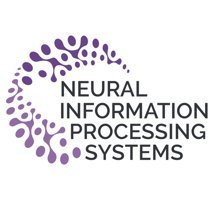
SCICO
@SCICO_journal
Science of Computer Programming is dedicated to the distribution of research results in the areas of software systems development, use and maintenance.
You might like
Alsubhi et al. present Coconut, a C++ tool that enforces object behaviour correctness through typestate checking using GCC’s GIMPLE. An experiment on embedded systems shows that it improves performance and reduces code complexity w.r.t. unverified code. sciencedirect.com/science/articl…
Azhir et al. introduce QualCode, an ISO/IEC 25010-based machine learning framework for software maintainability assessment. It was evaluated on diverse Java projects against existing tools, demonstrating superior performance. sciencedirect.com/science/articl…
Suárez-Brieva et al. present an SLR on "social debt" in software development, mapping 45 studies to its causes, effects, and detection strategies. The authors evaluate existing conceptual and automated tools used for identifying social debt. authors.elsevier.com/a/1lzoHc7X5EoI8
Jiang et al. introduce CtxFuzz, a fuzzing technique guided by context-aware heap operation sequences, to expose memory bugs. CtxFuzz was evaluated on nine real-world programs against 7 SoTA fuzzers, uncovering more bugs and discovering 10 zero-days. authors.elsevier.com/a/1lyFUc7X5EoHy
Pacheco Correa et al. analyzed the sampling threat when mining generalizable inter-library usage patterns. This is evaluated through simulations and a real-world case study, highlighting how restricting samples to specific libraries can skew results. authors.elsevier.com/a/1lsrUc7X5EoHl
Crochet et al. introduce PANTHER, a modular framework for the automated testing and verification of network protocols. It was evaluated in a case study on the QUIC protocol, with reproducible experiments available for public use. authors.elsevier.com/a/1ls8Dc7X5EoH5
Tsakalidis and Vergidis surveyed 64 business process redesign (BPR) methodologies, assessing them on systematic design and generalizability. They propose the BPR Application Framework as a clearer, more actionable path for practitioners and researchers. doi.org/10.1016/j.scic…
Duong et al. introduce an interactive dashboard for peer code review in a programming course. It was evaluated over a 17-week experiment, comparing dashboard users to a control group, showing improved engagement, performance, and instructor monitoring. authors.elsevier.com/a/1lv7kc7X5EoHx
Wijs discusses the SLCO domain-specific language and draws connections between the various research results. It presents an overview of various research topics and results demonstrating the framework’s application in component-based software development. doi.org/10.1016/j.scic…
Salimi et al. introduce a profit-aware, adaptive scheduling algorithm for heterogeneous multi-server CPS to meet deadlines and maximize system profit. Simulations show that it outperforms baseline methods in response time, profit, and deadline adherence. authors.elsevier.com/a/1lnm2c7X5EoHH
Liu et al. present ACInv, which combines static analysis and LLMs to generate loop invariants for complex programs. It solves 21% more cases than AutoSpec while matching its performance on numerical programs without data structures. authors.elsevier.com/a/1liDhc7X5EoGj
López-Martín tested ML models to predict software design effort, addressing the lack of models specific to this SDLC phase. The best models were Support Vector Regression and Multi-layer perceptron NN on a dataset of seven public software projects. authors.elsevier.com/a/1lgxIc7X5EoGW
Gholami et al. introduce a Case-Based Reasoning method using Repertory Grid Technique features to help software architects select patterns that meet specific quality requirements. The method achieved 83% accuracy in predicting the most suitable pattern. authors.elsevier.com/a/1lfpQc7X5EoG8
Gómez Llanez et al. employ four design patterns in a Cognitive-Affective model to simplify serious game development. Evaluation through case studies, usability tests, and statistical analysis showed less development times w/o affecting training quality. authors.elsevier.com/a/1ldzSc7X5EoFI
Cimini and Montas extend a proof language to support type soundness verification for functional languages with subtyping. It evaluates this by generating Abella proofs that machine-check type soundness and subtyping equivalence with minimal lemmas. authors.elsevier.com/a/1ldYyc7X5EoFg
Ding et al. introduce a Metric Attention Module (MAM) that boosts software defect prediction by mining correlations in features and modules. It was evaluated on several datasets in within- and cross-project settings, showing improvements over baselines. doi.org/10.1016/j.scic…
Suwa and Igarashi introduce MetaFM, a module system enabling cross-stage type abstraction in multi-stage programming with advanced module features. It is evaluated through two formal semantics and a real-world implementation showing type safety. authors.elsevier.com/a/1lbtuc7X5EoFU
Rabbiun et al. introduce an exact schedulability test for Adaptive Mixed-Criticality systems with Weakly-Hard constraints using a generalized (m,k)-firm model. The evaluation shows an 18% schedulability improvement over the traditional skip-over model. authors.elsevier.com/a/1lbEtc7X5EoFy
Boukham et al. present a retrospective case study on using the Spoofax language workbench at Oracle to develop DSLs for large-scale graph analytics. The evaluation examines how Spoofax met industrial needs over 10 years in real-world use. authors.elsevier.com/a/1lZTec7X5EoFH
Llanez et al. integrate four software design patterns into the Cognitive-Affective (COGAF) model to streamline the development of Serious Games. A case study shows improved code organization and efficiency without compromising training effectiveness. sciencedirect.com/science/articl…
United States Trends
- 1. Good Monday 31.6K posts
- 2. #MondayMotivation 8,437 posts
- 3. TOP CALL 3,899 posts
- 4. AI Alert 1,594 posts
- 5. Check Analyze N/A
- 6. Token Signal 2,105 posts
- 7. Market Focus 2,689 posts
- 8. #centralwOrldXmasXFreenBecky 624K posts
- 9. SAROCHA REBECCA DISNEY AT CTW 640K posts
- 10. #LingOrmDiorAmbassador 320K posts
- 11. Victory Monday 1,529 posts
- 12. NAMJOON 62.8K posts
- 13. #BaddiesUSA 67.5K posts
- 14. DOGE 188K posts
- 15. Chip Kelly 9,636 posts
- 16. Monad 122K posts
- 17. Happy Thanksgiving 10.2K posts
- 18. Stacey 23.5K posts
- 19. Gilligan 4,181 posts
- 20. Scotty 10.6K posts
You might like
-
 David Lo
David Lo
@davidlo2015 -
 IEEE SANER
IEEE SANER
@SANERconf -
Max Di Penta
@mdipenta -
 Federica Sarro 🏳️🌈
Federica Sarro 🏳️🌈
@f_sarro -
 IEEE ICSME 2026
IEEE ICSME 2026
@IEEEICSME -
 ESEM Conference
ESEM Conference
@ESEM_conf -
 Gabriele Bavota
Gabriele Bavota
@gbavota -
 Foutse
Foutse
@SWATLab -
 Giusy Annunziata
Giusy Annunziata
@Giusy_A_ -
 Giammaria Giordano
Giammaria Giordano
@GiammariaGiord1 -
 Valerio Terragni
Valerio Terragni
@ValerioTerragn1 -
 Mohamed Wiem Mkaouer
Mohamed Wiem Mkaouer
@mwmkaouer -
 Gilberto Recupito
Gilberto Recupito
@gilbert_rec
Something went wrong.
Something went wrong.



















































































































